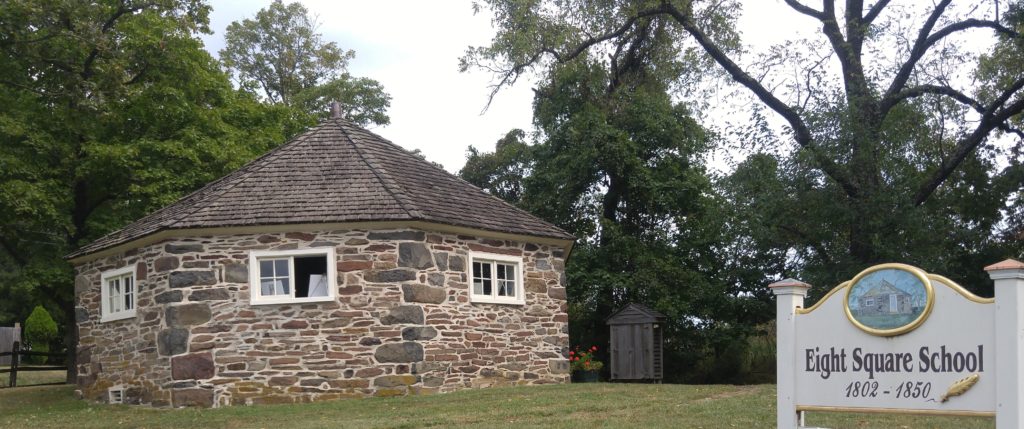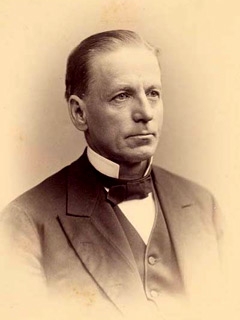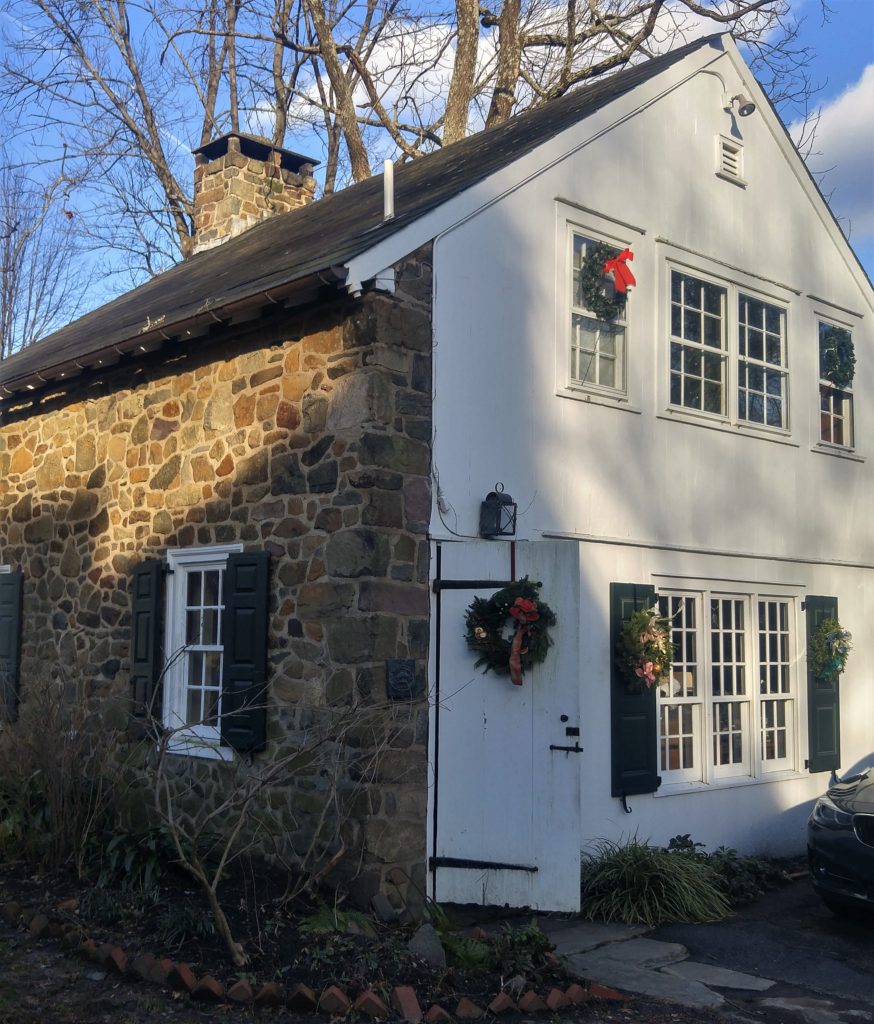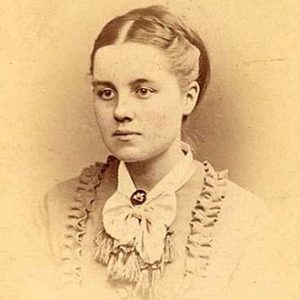Solebury’s Ed Magill earned 3 cents per student per day to begin his 65-year teaching career.
Some months back, my grand kids and I visited a one-room school in Wrightstown to compare education in the early 1800s to what the kids experience today. Margaux instantly took to a desk slate to practice writing and arithmetic in the way it was done at Eight Square Schoolhouse 177 years ago. Older brother Dashiell studied in detail everything – from the ink bottles and quill pens to textbooks and maps that hardly resemble the world we know today. Dash wondered where the cafeteria was.
Which brings me to the story of Ed Magill. I view him as Bucks County’s version of Mr. Chips. For 65 years he was a beloved school teacher who started teaching at 16 in his dad’s wagon house loft. He gave his all to the many students who graced his path leading from his make-shift classroom to a long tenure as president of Swarthmore College where he championed co-education of men and women. At age 81 he returned to where it all began and wistfully trolled the memories.

After attending Quaker boarding school in West Chester in 1842, Ed opened his own school on the family farm off Aquetong Road. He charged 3 cents a day for each kid who showed up for class.
“Of the work in the schoolroom, it would astonish and confound any young teacher of the present day,” he recalled in 1906. “Arithmetic was ‘ciphered’ individually on slates without any class instruction or use of blackboards or charts. The chief aim was to ‘get the answer,’ without much attempt at reasoning as to the process employed to obtain it. In penmanship, copies were ‘set’ by the teacher’s hand, at the top of each page of the copy-book, and without any aid from printed or engraved slips. Quill pens were universally employed. I see myself now, walking about the small, low-ceiling room, criticizing the forms of the letters, penknife in hand with a bunch of new-made pens sticking behind my ear.”

The school year followed the norm: work the farm in spring and summer, teach in late fall and winter. “From the opening of the school I engaged with my pupils in games of ball during the recess, just as one of them. But I was careful to put on the serious and resolute schoolmaster’s face when I rang the bell for them to reassemble. This acting a double part, as master and student, was made all the more difficult because my pupils were my own personal friends, relatives and near neighbors, and a number of them, both boys and girls, were my seniors by several years.”
After two winters at the Magill school, Ed took a position in the new public school in Solebury. After a few years, he left to enroll at Yale University and Brown from which he graduated in 1856. He became principal at Providence (R.I.) High School, then Boston Latin School before resigning to travel Europe. On a visit to Paris, the subject of corporal punishment came up. “I heard a professor in a class at Sorbonne explain a reference in the English book they were reading, by saying to his French boys it was the practice in England to whip children at school. To one like myself who knew something of this practice in my own country, the astonishment of the young French boys seemed strange indeed.”

Returning home in 1869, he joined the new Swarthmore College in Delaware County. Two years later he became president and championed co-education. “Nothing short of co-equal, co-educational advantages and the same degrees conferred upon both sexes for equal attainments will meet the demands of the times,” he proclaimed.
Magill served as president for 17 years and continued teaching. Today the main walk to Swarthmore village is named for him. His daughter Helen Magill White became a teacher, the first woman in the United States to earn a Ph.D.

In the twilight of his life, Ed revisited his old classroom in the wagon house. “I went up the old, steep, rickety steps to the loft and looked out from the south windows over the narrow limits of the lane, where the ball ground was.” He conjured up the faces of students at play, the joy of it all when both he and they were so young. On the lower window frame, he noticed marks left by a penknife at the beginning of his career. “Having no watch of my own at that time, I borrowed one from a student and by it noted and marked the shadow falling on sunny days upon the lower frame, indicating by notch the hour for the opening and closing of school and for the recesses in the morning and afternoon. They are still there to tell the story of more than half a century ago.”
Sources include “Sixty-five Years in the Life of a Teacher, 1841-1906″ by Edward Hicks Magill published in 1907 shortly before his death. Also appreciation to Robert Huxley, current owner of the Magill farm, and the Solebury Township Historical Society.
Where you can experience post-Colonial schooling
Two schoolhouses of the 18th and 19th centuries are open to the public in Bucks County. It’s there you can experience the type of education Edward Magill taught when he was 16.
Eight Square School: The one-room octagonal schoolhouse is located where Swamp Road intersects Second Street Pike (Rt. 232) in Wrightstown Township. The school founded in 1802 has been renovated. Call the township office at 215-598-3313 for opening dates.
Solebury School: Built in 1755, the one-room schoolhouse is located in Solebury Village at the corner of Sugan and York roads. It’s been used for education continuously up to the present day. As the headquarters of the Solebury Historical Society, the school is open to the public on Wednesday afternoons. Plan to visit between 3 and 5 p.m. More information on the web at https://soleburyhistory.org/
